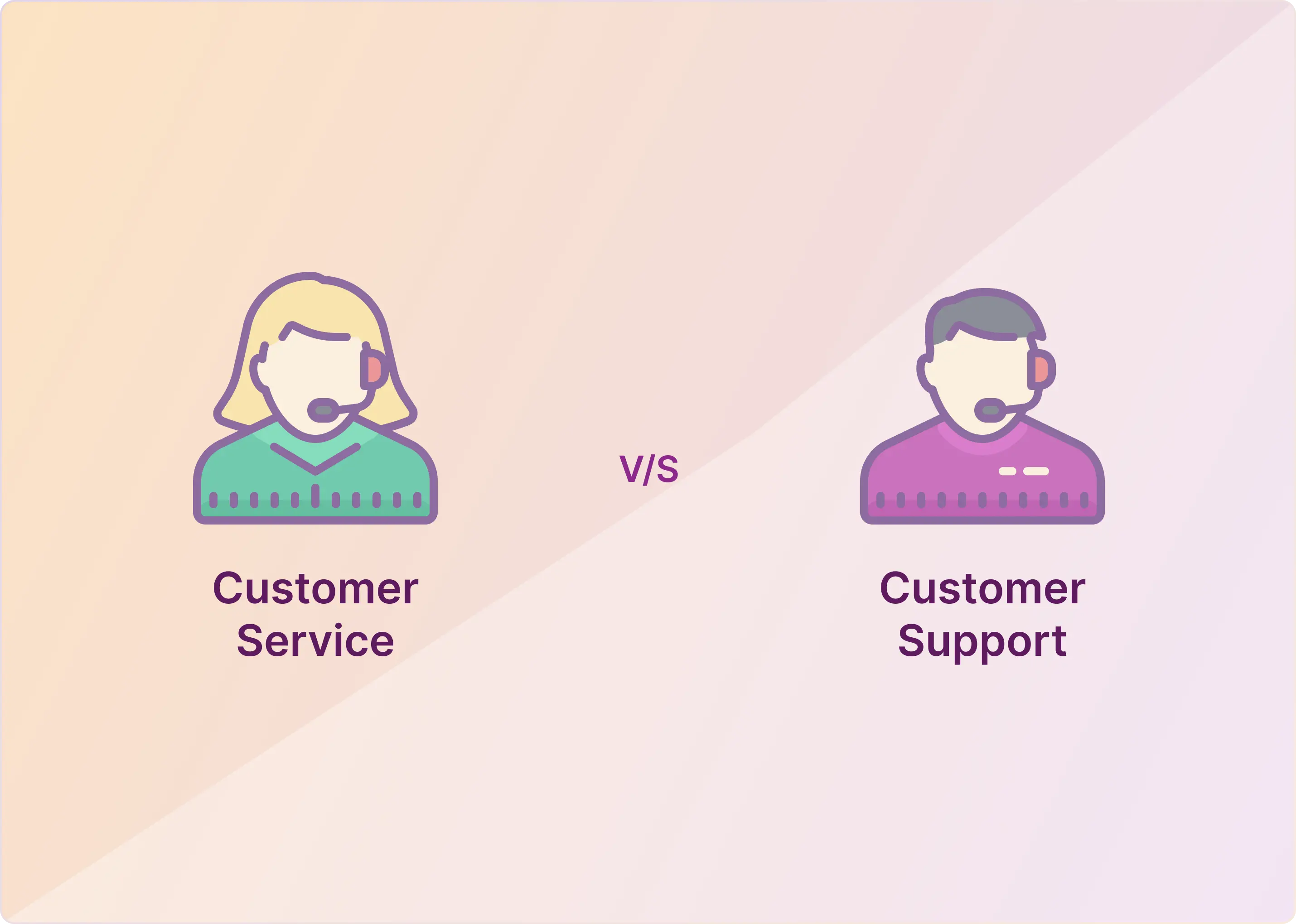business-services

July 10,2025 • 4 min read
Customer Service vs Customer Support: Understanding the Difference and Its Importance

In today’s competitive business landscape, understanding the distinction between customer service vs customer support is essential for delivering outstanding customer experiences. While both serve to help customers, each has its own purpose, timing, and impact.
What Are They?
-
Customer Service is the broad, ongoing interaction between a business and its customers—covering everything from answering questions before a sale to managing follow-ups after purchase. It’s about goodwill, creating trust, and building lasting relationships.
-
Customer Support, in contrast, is focused, targeted assistance for customers facing issues with a product or service they already own. Technical troubleshooting, bug fixes, and guidance with complex features all fall under this umbrella.
Understanding customer service vs customer support empowers companies to provide tailored experiences that genuinely meet customer expectations at every step of their journey.
The Role of Customer Service in Brand Loyalty
Exceptional customer service goes beyond being helpful—it builds emotional connections with customers. Today’s consumers expect more than just prompt replies; they want brands that anticipate needs and care about their experience. That’s where proactive service shines.
For instance, pre-emptively offering solutions—such as order updates or usage tips—shows genuine concern. In doing so, companies demonstrate that they value more than just transactions. This fosters trust and encourages loyal customers to become enthusiastic advocates.
Brands that master customer service enjoy repeat business, glowing reviews, and increased referrals. In short: it’s not just a support channel—it’s a strategic advantage.
The Technical Crucial Role of Customer Support
While customer service vs customer support might overlap in daily conversation, support plays a distinct, critical role in issue resolution. When customers face technical problems—broken features, system errors, or installation issues—they seek immediate, knowledgeable help.
Support teams equipped with deep product knowledge can swiftly diagnose issues and guide users toward effective solutions, reducing downtime and preventing frustration. This expertise builds confidence and reinforces the customer’s perception of reliability—moving them from frustration to trust.
When to Use Customer Service vs Customer Support
Understanding the difference is half the battle. Equally important is knowing when to activate each function:
-
Use customer service for general inquiries—questions about pricing, new feature explanations, product usage tips, or brand policies. Ideal channels include live chat, phone, email, or even social media.
-
Tap customer support when a customer needs technical assistance. Examples include troubleshooting, hardware or software issues, specialized account queries, or product malfunctions. Support channels often include helpdesk systems, ticketing platforms, or forums.
Clear escalation protocols ensure seamless transitions from service to support when a situation demands it. This clarity boosts efficiency and avoids having customers repeat themselves.
Why Differentiating Matters for Business Success
Why does it matter? Because efficiency and messaging clarity depend on it. When companies distinguish customer service vs customer support, they:
-
Improve Operational Efficiency
Each team can apply specialized tools and training that match their role, leading to faster, more accurate assistance. -
Communicate Clearly with Customers
Defining roles allows businesses to set realistic expectations and reduce confusion around where help comes from. -
Elevate Customer Experience
By channeling the right help quickly, customers feel heard and valued—leading to satisfaction, loyalty, and advocacy.
Ultimately, clear distinctions drive better internal workflows, external trust, and sustainable growth.
Creating a Seamless Customer Journey
For optimal service, integrate customer service vs customer support into a cohesive experience:
-
Map customer touchpoints—from awareness and purchasing to usage and issue resolution.
-
Define responsibilities—customer service handles general guidance, support deals with technical emergencies.
-
Ensure transition paths—guide users smoothly from front-line interactions to expert problem solvers when needed.
-
Train your teams—equip service staff to identify when escalation is necessary and support teams to solve root problems.
-
Measure results—analyze both satisfaction scores and technical resolution metrics to refine processes.
Empowering Both with Smart Tools
Modern tools like the ChatArm AI Chatbot help bridge service and support by providing:
-
Immediate answers to general inquiries (customer service)
-
First-level troubleshooting and ticket creation (support escalation)
-
Seamless hand-offs to human experts when necessary
With intelligent AI triage and automated assistance, businesses can deliver exceptional replies quickly, while reserving expert human help for complex issues.
Final Thoughts on Customer Service vs Customer Support
Mastering both is a strategic advantage. Companies that invest in each—using tools like ChatArm—ensure user satisfaction, drive loyalty, and nurture long-term growth.
Stop viewing service and support as interchangeable. Instead, treat them as specialized, complementary tools. When aligned, they form a powerful framework that supports your brand’s promise and elevates the customer experience at every turn.
ChatArm Details
User Profile
- Full name
- ChatArm
- Email address
- chatarm87@gmail.com
- Join Date
- 2025-07-10
- State
- City
- Pincode
- Address
- Follow us on Facebook
- Follow us on Twitter
- Website Name
- Bio